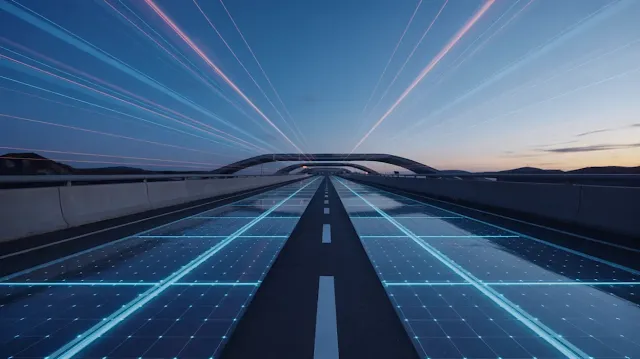Smart Roads That Generate Power: The Future of Sustainable Transportation
From Traffic to Power Generation
What if roads could do more than just support traffic? Imagine highways that generate clean energy as vehicles drive over them. This is no longer a distant dream but a real-world innovation reshaping how we think about infrastructure. Thanks to emerging technologies, smart roads are being developed to convert kinetic energy from vehicle movement into electricity, opening the door to more sustainable cities and energy-efficient transport systems.
Piezoelectric Technology: Harvesting Energy from Movement
The Science Behind the Innovation
Piezoelectric materials generate electricity when subjected to mechanical pressure. When installed beneath the surface of roads, these materials capture the vibrations and weight of moving vehicles to produce usable energy. This energy can be used to power streetlights, traffic systems, and nearby infrastructure, helping cities reduce their reliance on non-renewable sources.
Real-World Applications
Countries like Israel, Italy, and the United States have already conducted pilot projects that demonstrate the effectiveness of piezoelectric roads. For instance, short sections of these roads have powered traffic signals and lighting systems, proving that this technology can be both practical and scalable.
Electromagnetic and Kinetic Power Systems
Capturing the Energy of Vehicle Pressure
Other innovations include electromagnetic ramps and systems that use kinetic force from vehicles. These methods involve plates or mechanisms installed beneath road surfaces that compress when driven over, generating energy that can be stored or used immediately.
Advantages and Use Cases
This energy can support local utilities or even be redirected to power electric vehicle charging stations. In urban environments with heavy traffic, the potential to generate continuous, clean energy is substantial.
Inductive Charging Roads for Electric Vehicles
Charging While Driving
One of the most exciting developments in smart road technology is inductive charging. Using coils embedded in the road, this technology allows electric vehicles to recharge wirelessly while in motion. No need to stop at a charging station, drivers can stay on the move while their vehicles get the power they need.
Global Pilot Programs
Countries like France, Sweden, and South Korea are investing in this futuristic infrastructure. The results show promising levels of efficiency and safety, setting the stage for wider adoption in the coming years.
Thermoelectric Roads: Capturing Heat for Power
Turning Temperature into Electricity
Smart roads can also leverage thermoelectric generators (TEGs) to capture the heat difference between the road surface and the cooler sublayers. This temperature variance produces a small but continuous stream of electricity, perfect for powering sensors and road monitoring systems.
Benefits of Smart Energy Roads
Sustainability and Efficiency Combined
Smart roads that generate energy offer multiple advantages:
Reduced dependency on fossil fuelsLower city power bills
Integration with smart city networks
Real-time traffic and environmental monitoring
These roads also promote the use of electric vehicles and contribute to zero-emissions goals.
Challenges in Implementation
Cost and Maintenance
While promising, smart energy roads come with challenges. Installation costs can be high, and the durability of embedded technology must match the road's lifespan. However, advancements in materials and engineering are helping to reduce these barriers over time.
Regulatory and Technical Hurdles
Standardizing infrastructure to accommodate energy-generating components across regions and countries requires long-term planning and cooperation. Governments and private sectors must work together to build efficient, scalable smart road networks.
The Road Ahead: Scaling Smart Infrastructure Globally
Integrating Clean Energy with Mobility
As cities look for innovative solutions to tackle climate change, smart roads offer a dual-purpose solution, enhancing infrastructure while generating renewable energy. The combination of piezoelectric systems, inductive charging, and thermoelectric surfaces presents a powerful opportunity to reshape urban mobility.
A Future Built on Sustainable Roads
Smart road technology aligns perfectly with the global shift toward clean energy and sustainable design. From supporting electric vehicle adoption to reducing emissions, these energy-generating roads are poised to become key components of smart, green cities.
Conclusion: Driving Toward a Self-Powered Future
Turning roadways into power sources is more than a technological curiosity, it's a transformative step in building a greener planet. With ongoing advancements in piezoelectric, electromagnetic, and inductive systems, the future of infrastructure is intelligent, renewable, and remarkably efficient.
As innovation meets necessity, smart roads stand as a symbol of how urban planning, clean energy, and technology can unite to create a sustainable transportation revolution.




Write a comment, your opinion matters to us